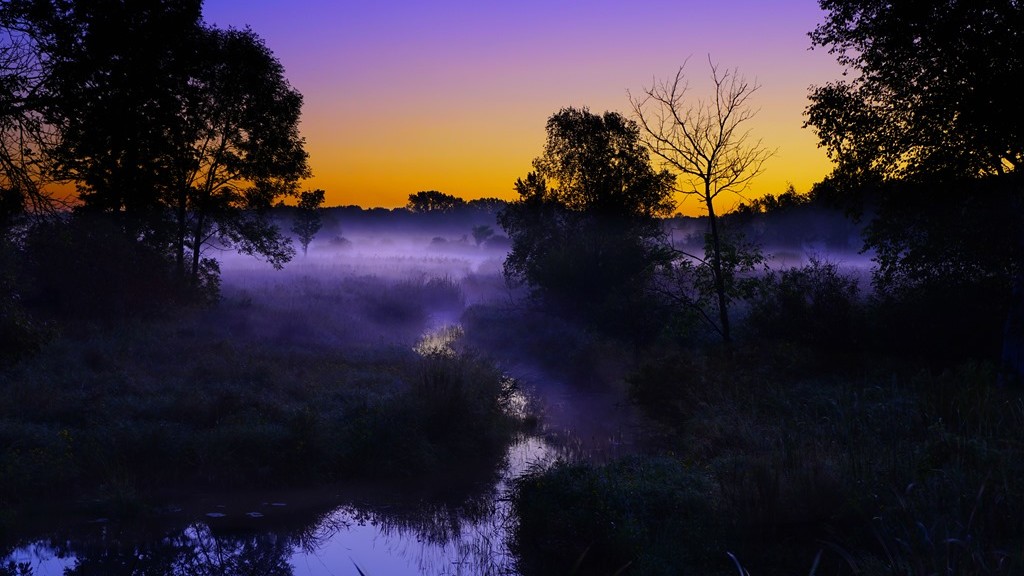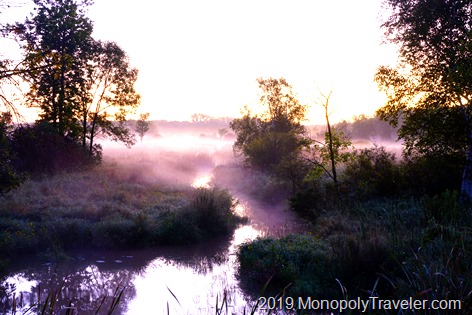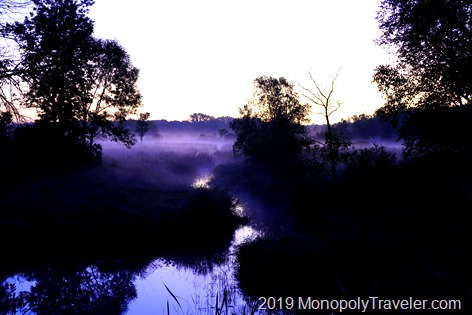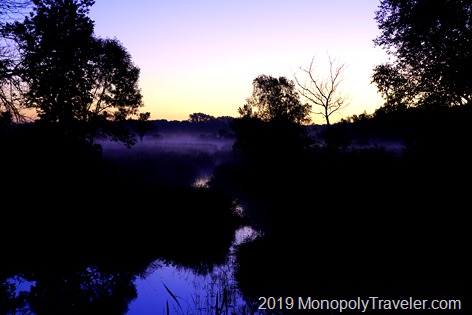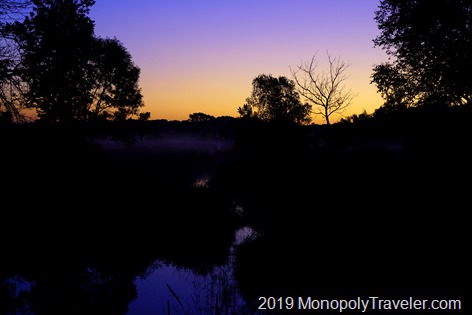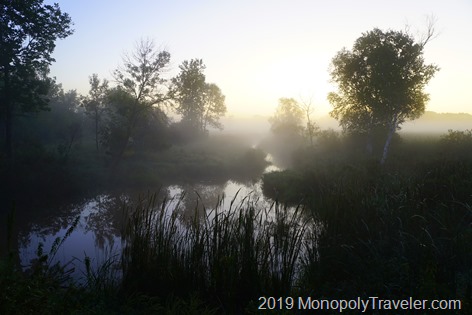Each time I view the picture above I am continually amazed at how much I enjoy it. The colors of the rising sun along with the stream flowing through the middle of it. And of course the fog. Without the fog this photo is just a nice picture of the sunrise. I never imagined capturing this shot on this morning. I was in search of another of Minnesota’s native orchids which I wrote about here. Since I was already coming to this park to find an orchid, I decided to get there earlier to enjoy the night sky which I was missing because the year has been so cloudy. While driving around under the star filled sky I eventually stopped at this spot to photograph the stars. Soon there was light on the horizon and I could see a heavier fog developing near the ground. Setting up a few different compositions I decided that this would be the shot I wanted to work with. Cameras see things differently than our eyes do and capturing a sunrise or sunset can be difficult as either the foreground becomes only a silhouette or the sky is to bright losing much of the beautiful color.
Anticipating this I knew I had to take different exposures to capture all of the different elements in the shot. Fortunately the camera was already set up for this from taking photos of the night sky. It was attached to a tripod and had a remote shutter release plugged in so as to not disturb the camera to get a sharper image. In this shot above I overexpose the scene to capture the color of the plants in the foreground. These portions where then blending with the underexposed photo, which is the second from the bottom, to bring out more detail in the plants at the bottom instead of keeping them as a silhouette. This is closer to what I was seeing that morning.
This next photo, above, is still overexposed but not as much. It reveals the fog in a more realistic fashion. Because of this I used the foggy portions of the photo to blend together with the underexposed picture below. The next picture below is what the camera considers properly exposed. This was not how everything looked to me at that time. There is no detail in the foreground and the sky is mostly blown out appearing white. There’s nothing that can really be done about this in a photo editing program using only the one picture. You can see why multiple photos are needed with different exposures to capture a more realistic scene at this time of day. Another solution to create a more realistic picture is to use specialized filters on the camera lens. I don’t have the necessary filters for my camera so blending multiple exposures in photo software is how I handle these situations. From this properly exposed shot I used the tree line next to the sky for the final photograph.
This next picture below is underexposed to bring out the colors of the sky before the sun rose above the horizon. Everything else basically became a silhouette. Often times I like that look but not for this photograph. I wanted the fog, which is so crucial to the whole scene, to be visible in the final picture. Below is the photo that I used as the foundation for the final picture at the top. From this I blending the different pieces from three other pictures of different exposures to create a photo that more realistically resembles the scene that morning.
Most of the time the best photos come from planning, preparing, and waiting for just the right moment to capture the scene with the right lighting. There can be a lot of time involved to set up a beautiful picture such as scouting out an area, trying different compositions, watching the weather forecasts, and possibly long hikes with all of the heavy camera equipment and suitable clothing for the conditions. This was a case of being in the right place at the right time. Sometimes you just get lucky and rewarded for waking up earlier than would be considered sane and getting to a location with plenty of time. I did drive around much of the area earlier in the morning and had to drive around a second time once I decided this was the spot I wanted to shoot from due to the stream and direction of the brightening sky in relation to that stream. There was some planning and scouting but not much.
What is even more amazing to me is you could go by this spot almost any other time and it looks very plain and lacks a great photographic quality. Ordinarily a place where you wouldn’t expect to capture a great picture. But a late summer sunrise combined with a beautiful fog makes the shot. The picture below shows the same location after the sun has risen above the horizon. The fog became even heavier for a short time but quickly disappeared once the sun warming rays penetrated through it. The water looks mucky and brown. There are a scattering of trees, some if which are dead. A variety of wetland plants which, typically don’t make nice pictures, are everywhere throughout the scene. Really nothing except the stream appears as though it would make a good picture. It really proves the importance light, timing, and composition make. I could have used the composition in this picture below and it would have made an interesting photo. By zooming into the scene a little more like I did, I feel like I’m taken into the landscape. I become a part of the scene enjoying the twilight as fog develops and water trickles by. You can almost here the morning birds beginning to chirp and feel the cool foggy air causing you to reach for the warm coffee nearby while waiting for the sun’s rays to reach above the trees and the day to begin.

